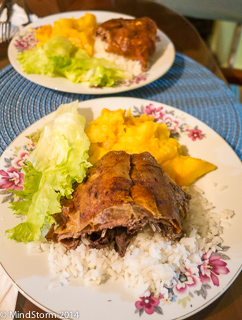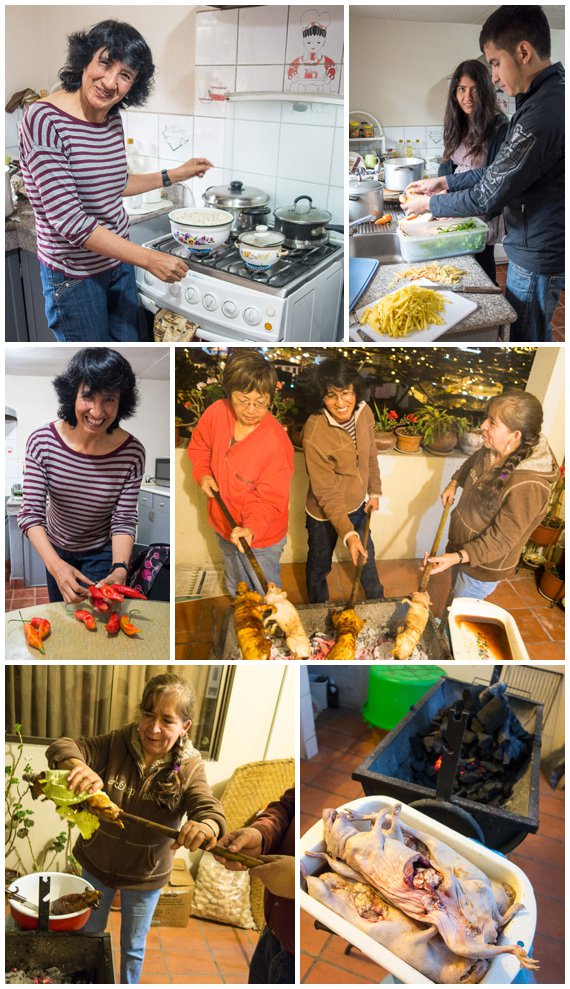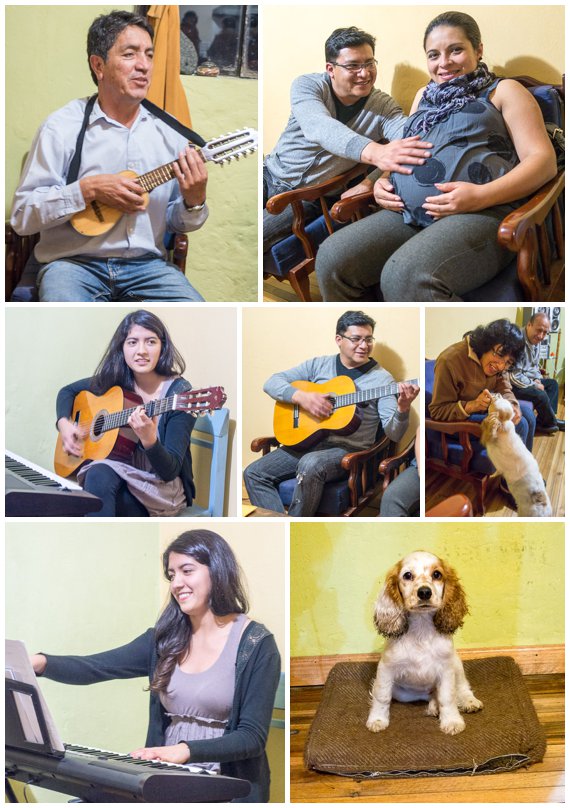Back in the USA, they are called guinea pigs and kept as pets. Here they are called cuy and are a gourmet feast most often served for special occasions and celebrations. We were invited to a special cuy dinner by Gloria, Evelyn’s Spanish teacher, last night for a night of feasting, music… and Spanish.
Only one member of the family speaks fluent English, so aside from some quick computer assistance I provided (my Spanish ain’t good enough for that! 🙂 ), the night was entirely in Spanish. For those of you following our progress in learning the language, you would be right in expecting that some conversations were stuttering and pidgin. As we have found throughout Ecuador though, if you try to speak Spanish, most people are more than willing to help and work with you. It can be frightening at times, but with a cuy meal as a reward, who could say no??
Dinner preparation was a family affair. All the more so the cooking of the cuy. We have had cuy in restaurants before, and found them somewhat dry. We were told that these cuy were “grown naturally, and fed all natural foods — not like those production cuy raised on food pellets.” (all said in Spanish, of course) We were eager to help with the cooking, and then taste the difference.
The cuy were already skinned and prepped when purchased, much like a chicken would be at your local butcher then marinated the night before. Special sticks, the size of broom handles, are then stuck through them from mouth through tail. The cuy must then be slowly rotated by hand over a BBQ pit, being periodically basted with achiote oil, for an hour. I commented that if I made this at home, I would use a motor for automatic turning. Gloria responded that they have a rotisserie, but that the thick poles needed for the cuy would not fit. Also, we had four people rotating four cuy, which would have been pretty hard on a normal rotisserie.
After about an hour, the cuy expert chef examined the mouth. I was told she was looking for any moisture, which must be gone for the cuy to be done. Sure seemed to me like the moisture was gone after half an hour, so we have eaten raw cuy if I had been doing the examination! When the meat was done, she used a cabbage leaf as a hot-mit and pulled the hot cuy from the stick.
When the BBQ was complete, the meal was assembled, and we sat down to the feast shown at the top of this post. The cuy was definitely tasty and moist, and the best we’ve had in Ecuador.
After dinner everyone moved to the living room, where the music began. This is an incredibly talented musical family, where everyone either played an instrument or sang (or makes craftsman quality guitars!). We spent the next couple hours listening to music, and sometimes joining in — picking up words off a smart phone when they were not known.



